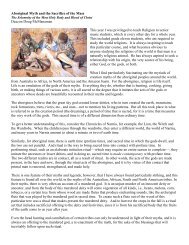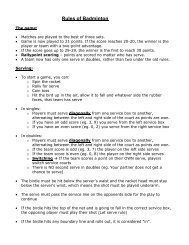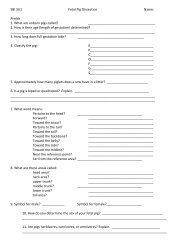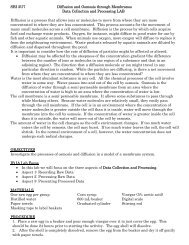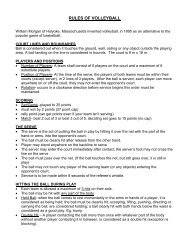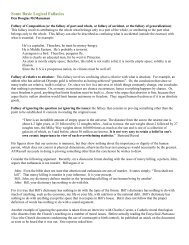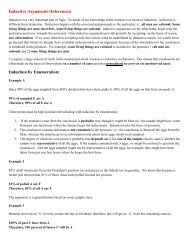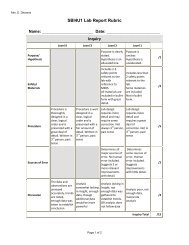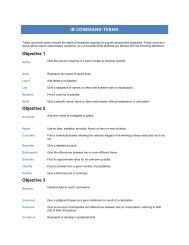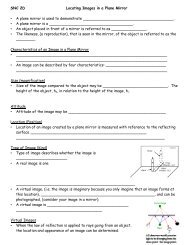Syllabus - Father Michael McGivney Catholic Academy
Syllabus - Father Michael McGivney Catholic Academy
Syllabus - Father Michael McGivney Catholic Academy
- No tags were found...
You also want an ePaper? Increase the reach of your titles
YUMPU automatically turns print PDFs into web optimized ePapers that Google loves.
Option B: Quantum physics and nuclear physics (15 hours)TOK: This option raises fundamental philosophical problems related to the nature of observation andmeasurement. The concept of paradigm shift can be developed here.B1–B2 are identical to 13.1–13.2.B1 Quantum physics 10 hoursAssessment statement Obj NotesThe quantum nature of radiationB.1.1 Describe the photoelectric effect. 2B.1.2Describe the concept of the photon anduse it to explain the photoelectric effect.B.1.3 Describe and explain an experiment to testthe Einstein model.B.1.4 Solve problems involving the photoelectriceffect.The wave nature of matterB.1.5 Describe the de Broglie hypothesis and theconcept of matter waves.3 Students should be able to explain why the wavemodel of light is unable to account for thephotoelectric effect, and be able to describe andexplain the Einstein model.3 Millikan’s experiment involving the application of astopping potential would be suitable.32 Students should also be aware of wave–particleduality (the dual nature of both radiation andmatter).B.1.6 Outline an experiment to verify the deBroglie hypothesis.2 A brief outline of the Davisson–Germerexperiment will suffice.B.1.7 Solve problems involving matter waves. 3 For example, students should be able to calculatethe wavelength of electrons after accelerationthrough a given potential difference.Atomic spectra and atomic energy statesB.1.8Outline a laboratory procedure forproducing and observing atomic spectra.B.1.9 Explain how atomic spectra provideevidence for the quantization of energy inatoms.B.1.10 Calculate wavelengths of spectral linesfrom energy level differences and viceversa.B.1.11 Explain the origin of atomic energy levelsin terms of the “electron in a box” model.2 Students should be able to outline procedures forboth emission and absorption spectra. Details ofthe spectrometer are not required.3 An explanation in terms of energy differencesbetween allowed electron energy states issufficient.2 Aim 7: Computer simulations showing the linkbetween energy level transitions and spectral linesassist understanding.3 The model assumes that, if an electron is confinedto move in one dimension by a box, the de Brogliewaves associated with the electron will bestanding waves of wavelength,Where L is the length of the box and n is apositive integer. Students should be able to showthat the kinetic energy E K of the electron in thebox is given by



